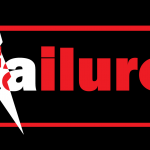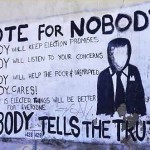According to Chris Rose, politics is the ‘art of possible’, while campaigning is the science is the science and art of changing what is possible. With a successful campaign, you can inspire your followers to go on to the next target; while a poorly focuses campaign will only burn out your effort.
So before you go any further o your political campaign, stop and ask yourself: Do I understand about campaigning?
1. Campaigning is for Motivation not Education
Campaigning increases the incentives to take action, it helps you to maximise the motivation of the audience but not their knowledge. Although campaigns do have some educational effect, but it is education through doing or experience. So, if you try to use education to campaign, you will end up circling the same issue but not changing it.
Remember, information is not powerful enough until it leads to mobilisation.
2. Identify the forces
You have to know what needs to change. Analysis the issue, the people, organization or institutions involved. Work out what the mechanisms are for the decisions or policy that you want to change. Don’t forget to identify the potential allies, opponents and also your target audience.
3. The sequence of campaigning
The right sequence of campaign: AWARENESS > ALIGNMENT > ENGAGEMENT > ACTION.
The campaign involves a series of communications exercises to take the target audience from a state of ignorance to concern (awareness) and then into anger and engagement (motivation), and finally into an action for satisfaction or reward.
Showing a problem may lead to the components of awareness but in order to lead to action, show them that now are the time or opportunity to change, and give them a solution or way to act.
4. K.I.S.S (Keep it Simple Stupid)
The issues can be complex but your campaign must not be complicated. Complexity will only makes people confused and this will lead to demotivates. A good campaign always comes with an effective motivation which needs simplicity in message.
A good campaign has to be a way, a path or a solution. Tell your audience what you think, the problem you see, the solution you find, and the opportunity to change. Use a simple ‘Call to Action’ which brings to action.
5. Against the UNACCEPTABLE
Analyse the issue or concern that are unacceptable to a big group of people. Try to attract broader support to make your campaign succeed. Generally, campaign against a small part of a big problem which the part is unacceptable by 99% of the public is much better to campaign against the overall problem which is only unacceptable to the 1% of the population.
6. To be direct
A campaign consists of persuading others and makes them take some form of action. Everyday we’re exposed to thousands, millions of messages. Almost all are ignored. The simplest thing that you can do to help your message ‘stick’ is to be direct and straightforward. Or maybe you can try to use their way of saying it.
7. Find the conflicts and make news
Conflict is necessary to campaigns. Without a conflict of interest, a campaign would not be needed. A campaign is about forcing a change to current situation. Therefore, conflict almost defines the campaigning.
Look at the conflict on the ideas of what gets changed, how does it affect me, my family and my life? Connect the news with politics through events.
8. Communicate with picture
Every time think of your campaign in steps. Create a chronological story board based on the objective that you want to achieve. Write down the challenges and how you will make that happen.
Don’t make the information bombing, create with a simple and real things. For example like occupying a tree, demonstrate on the street or invading the nuclear processing plant.
Create campaigns that actually generate those pictures in their mind and lead them to occur. Then make sure you communicate in pictures than words. You can even involve some photographer, take them to your campaign and get them to say whatever they can tell in the photo.
9. Test your campaign
2 types of research to test your campaign: a qualitative research to investigate language; political research to investigate obstacles, decision making, attitudes of key person, potential allies and opponents.
Don’t confused with the quantitative or so called ‘poll’ research that tell you how people think; qualitative research tells you why they think like that. The best known of qualitative research is ‘focus group’
Political research mostly involved a phone call or visit to the people.






